Vom Wintertraining in Europa zum Saisonstart auf der Südhalbkugel - ein Schock fürs System?
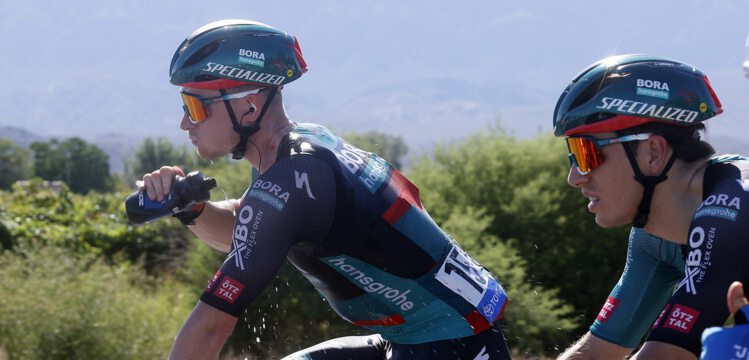
In Argentinien läuft gerade die Vuelta San Juan, in Australien ist die Tour Down Under bereits Geschichte und das Cadel Evans Great Ocean Road Race steht am kommenden Sonntag auf dem Programm von BORA - hansgrohe. Die Reise aus dem mitteleuropäischen Winter nach Argentinien und Australien ist ein Trip in den Sommer der Südhalbkugel. Neben Reisestress und Zeitumstellung stellen besonders die sommerlichen Temperaturen eine Herausforderung für die Radprofis dar. Wie gehen die Fahrer damit um, wie lange dauert die Adaption und welche Möglichkeiten zur Vorbereitung gibt es: Dan Lorang, Sam Bennett und Marco Haller über die ersten Rennen der Saison in der Südhemisphäre, damit verbundene Herausforderungen und Vorteile.
„Zeitumstellung, Hitze und Reisestress sind die größten Herausforderungen.“ - Dan Lorang
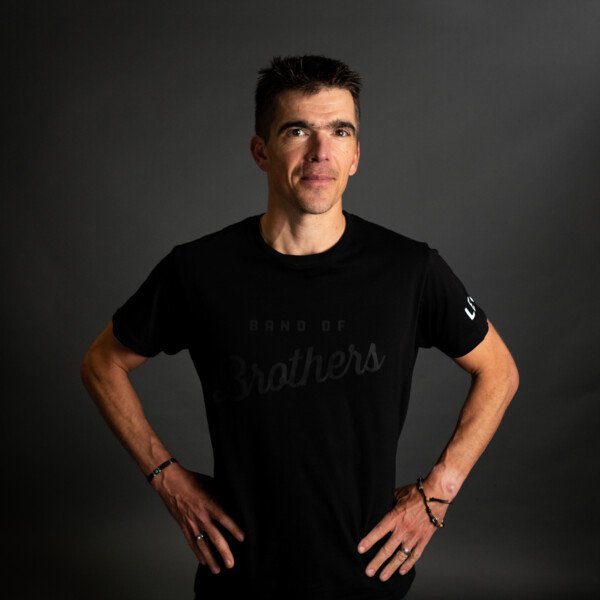
Dan Lorang ist als Head of Performance das sportwissenschaftliche Mastermind bei BORA - hansgrohe.
Dan, wo siehst du die größte Herausforderung an die Physis der Fahrer wenn sie aus dem europäischen Winter in den Sommer auf der Südhalbkugel reisen und dort in die Saison einsteigen?
- Zeitumstellung: Im Fall der Tour Down Under sind das 9,5 Stunden.
- Plötzlich Sommer: Wintertraining bei 10°C und Saisonstart bei 40°C wie aktuell in Argentinien ist auf jeden Fall eine große Herausforderung.
- Reisestress: Eine sehr lange Gesamtreisezeit von bis zu 30 Stunden ist anstrengend und steckt noch einige Tage im Körper
Zeit- und Temperaturumstellung: Wie viele Tage planst du für die Adaption ein?
Für die Zeitumstellung planen wir mit einem Tag Anpassung pro Stunde Zeitumstellung. Für die Tour Down Under wären das dann ca. 10 Tage bis der Jetlag überwunden ist. Zur schnelleren Anpassung ist es sinnvoll, bereits vor der Reise Zuhause den Schlafrhythmus etwas anzupassen.
Die Hitzeadaption dauert etwas länger, hier rechnet man mit 14 Tagen bis zur bestmöglichen Anpassung an das neue Klima.
Wie können sich die Fahrer bereits Zuhause auf die Temperaturumstellung vorbereiten?
Hier haben wir mehrere Möglichkeiten: Nach dem normalen Training draußen die warme Bekleidung anbehalten und drinnen auf der Rolle noch 30-60 Minuten bei lockerer Belastung weiter pedalieren. Die Körperkerntemperatur steigt etwas an und bei regelmäßiger Wiederholung der Methode findet so bereits Zuhause eine erste Anpassung an wärmere Temperaturen statt. Zusätzlich tragen auch Saunagänge und heiße Bäder dazu bei, die Temperaturen in Australien und Argentinien schneller und besser verkraften zu können.
Welche Risiken bestehen bei der Rückkehr in den europäischen Winter?
Die Anfälligkeit des Immunsystems ist mit Sicherheit das größte Risiko bei der Rückkehr. Neuerliche Zeitumstellung, Belastung vom Rennen und plötzlich wieder Winter. Hier müssen wir in der Belastungssteuerung darauf achten, dass die Fahrer vor dem nächsten Renneinsatz oder Trainingsblock ausreichend Zeit zur Erholung bekommen.
„Die erste Ausfahrt in Argentinien fühlt sich an, als wäre der Kopf bereits hier und die Beine noch in Europa!“ - Sam Bennett
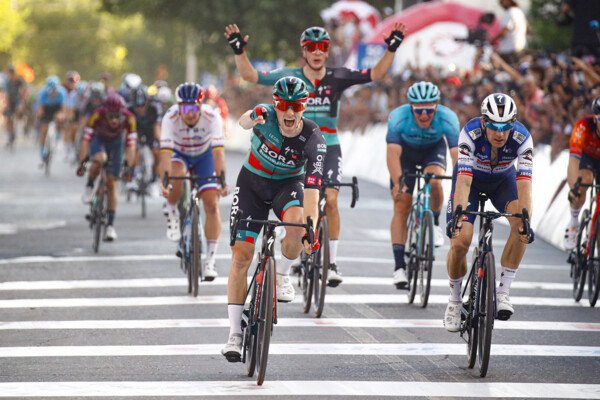
Erstes Rennen, erster Sieg: Sam Bennett gewinnt bei 40°C und mehr die erste Etappe der Vuelta a San Juan
Saisonstart im Sommer auf der Südhalbkugel: Ein Schock fürs System?
Definitiv ein Schock fürs System! Das komische ist, dass ich die Situation ja kenne und mental darauf eingestellt bin. Der Körper allerdings benötigt nach der Reise etwas länger für die Anpassung und so fühlt es sich bei der ersten Ausfahrt an, als wäre der Kopf bereits in Argentinien und die Beine noch in Europa.
Wie gehst du mit der Hitze um?
Wenn ich gut in Form bin, dann fällt mir die Anpassung wesentlich leichter. Gutes Wintertraining ist also für mich der erste Schritt zur erfolgreichen Adaption.
Wie groß ist die Freude über zwei Wochen Sommer im Januar?
Ein paar Wochen Sommer und gleichzeitig die ersten Rennkilometer - der perfekte Saisonstart! Wichtig ist für mich nur, dass durch Reisezeit und Jetlag nicht zu viel Trainingszeit verloren geht und ich in einem guten Rhythmus bleibe.
„Früh ins Bett, früh aufstehen, um dann in Australien gleich ein paar Stunden weniger Jetlag zu haben.“ - Marco Haller
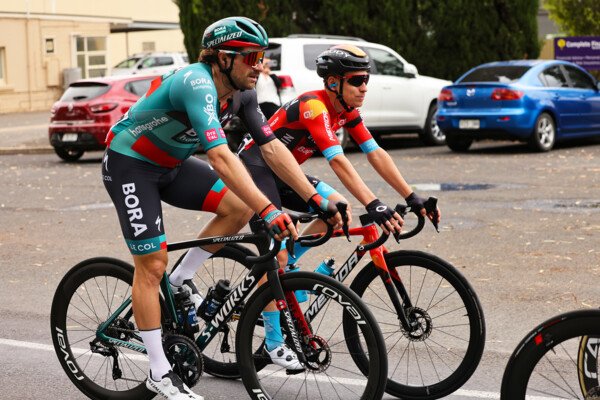
Marco Haller bei seinem vierten Saisonstart unter australischer Sonne
Wo liegt für dich die größte Herausforderung beim Saisonstart in Australien?
Die Temperaturanpassung fällt mir nicht besonders schwer, die Zeitumstellung ist für mich definitiv die größere Herausforderung.
Wie hast du dich Zuhause auf den Trip vorbereitet?
Früh ins Bett, früh aufstehen, um dann in Australien gleich ein paar Stunden weniger Jetlag zu haben.
Froh darüber, dem österreichischen Winter zu entfliehen?
Auch wenn ich den Winter Zuhause sehr mag, aber Adelaide im Januar ist für einen Radprofi einfach traumhaft. Die Hills, das Wetter, die Stimmung bei der Tour Down Under. Ich bin bereits zum vierten Mal hier und genieße den Saisonauftakt in Australien sehr.
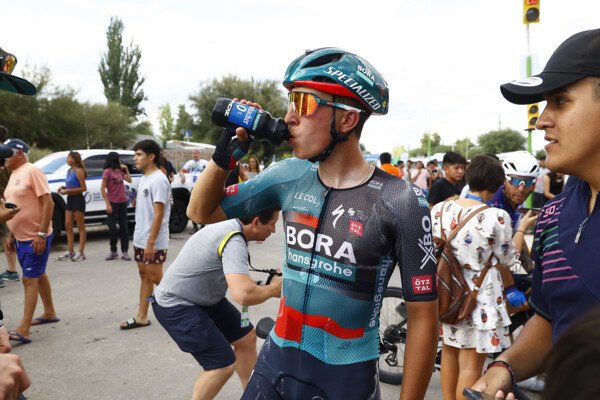
Die Salzränder am Trikot sprechen für sich - Florian Lipowitz nach der zweiten Etappe der Vuelta a San Juan